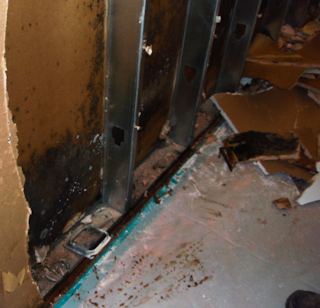MOLD
Mold is present in the environment, inside and outside structures. It is naturally occurring on a variety of surfaces including soil, foliage, and decomposing vegetation. In order for mold to flourish there needs to be moisture and a source of nourishment. Typically mold feeds on cellulose containing materials such as plant material and paper products.
Mold propagates by releasing spores that float through the air until they land on an appropriate surface and begin to grow. This ‘sporulation’ does not occur continuously but when it does the chance of exposure to the spores increases exponentially. When this happens inside a building, the effects can be dramatic.
The presence of mold inside a building is normal since spores are present in the outside air. Spores migrate into structures through open doors, windows and other openings, and can be brought in on clothing, hair, etc. The growth of mold on inside surfaces so that colonies get established is however not normal. The presence of nourishment and moisture are needed for mold to become established, and moisture inside buildings is not a normal condition.
Mold can cause serious health effects if inhaled. Immune-compromised individuals such as the elderly and those with upper respiratory illness are at particular risk to the effects of mold.
Even if mold colonies are not disturbed the spores may still contaminate the environment due to the sporulating action of colonies. Disturbance of moldy materials increases the chances of widespread contamination of adjacent areas. The action of air conditioning systems could exacerbate this effect.
Mold colonies should not be disturbed by untrained individuals, unless the affected area is relatively small and the mold growth is on a hard surface that can be effectively cleaned with a mild bleach solution. If large areas are affected and porous surfaces are involved, the cleanup and removal can be very involved and should be performed by professionals. The State recommends that a licensed Mold Consultant be utilized if the mold covers an area of 25 contiguous square feet or more.
Appropriate methods for handling environmental hazards such as moldy building materials have been developed. The use of Engineering Controls allows the removal of mold without the health risks. The Environmental Protection Agency (EPA), Occupational Safety and Health Administration (OSHA), and State regulations specify appropriate work procedures for work with mold.
The regulations spell out specific training requirements for individuals and companies that perform mold testing and remediation. Certification and licensing requirements must be met before such work can be undertaken.
Testing and monitoring are also required by the regulations. These ensure that proper response actions are used, and that buildings and the environment are not contaminated by mold spores as a result of the work.
FERN Environmental personnel are properly certified and licensed and are capable of providing guidance and testing to comply with regulatory requirements. We strive to provide practical, cost-effective solutions to environmental challenges such as mold colonization, by evaluating the problem, the source, as well as possible solutions.

